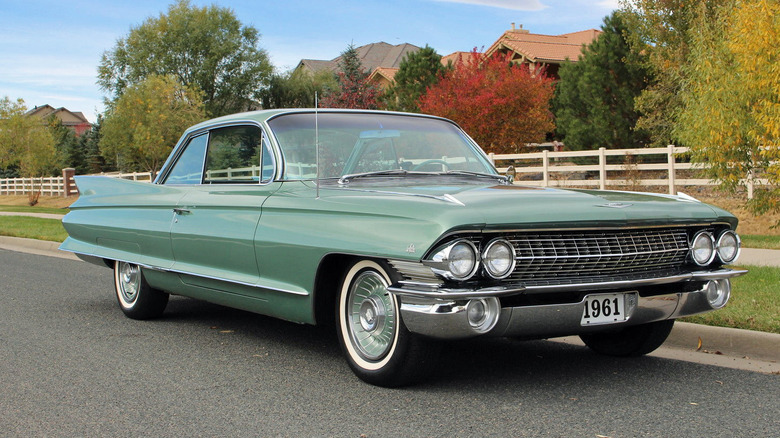Does It Cost More To Insure A Classic Car? Here's What You Need To Know
I don't like newer cars one bit. I would much rather drive an inefficient, primitive steel behemoth from the 1970s that one of today's plastic computers, all of which look the same to me. In my three and a half decades of driving, I have owned a half-dozen Jeeps from the 1970s and 1980s, including a few CJ5 and CJ7s, two International Scouts, a 1964 Plymouth Valiant, and two E36-series BMW 3-series convertibles. Owning classic cars has been a steady drain on my wallet in terms of upkeep, restoration costs, and gas. Classic cars can be remarkably cheap to insure, fortunately, although there are some things to keep in mind when shopping for a classic car policy.
Some classic insurers require your car to be kept in a garage, and others will limit your mileage or charge more to keep it in an urban location. Despite these caveats, classic car insurance can be a bargain compared to regular insurance. My last classic was a 1978 Jeep CJ7, which sat next to a 1992 Honda Accord in my Portland, Oregon driveway. I paid about $80 a month for liability-only insurance on the Accord, and between $200 and $250 a year for full coverage on the CJ7.
[Featured image by That Hartford Guy via Wikimedia Commons|Cropped and scaled|CC-By 2.0]
Most classic car insurance comes with restrictions
That Jeep policy was through Hagerty, which allowed me to state the value of the Jeep, including any aftermarket upgrades. It included all the same things as my regular policy on the Honda, like coverage for hospitalization and damage to my vehicle and others. The classic vehicle policy had some extras that you won't find with any regular insurer, though. Most important was the ability to declare the value of each vehicle based on how much I had invested in it, instead of a book number that undervalued a vehicle simply because it was old.
Classic insurance is a relative bargain, but it's not meant to function in the same way as a standard policy. Most classic insurers require you to prove that you have another vehicle for use as a daily driver with standard coverage, and you'll be asked how many miles per year you drive your classic when applying for insurance. While Hagerty, Grundy, or your primary insurer that also offers classic car insurance aren't going to hire a private detective to stake out your house, driving your classic more than the insurance stipulates is acceptable will void the coverage. So while classic car insurance is almost always going to be less expensive than regular vehicle coverage, it doesn't work as a substitute for primary insurance in most cases.
[Featured image by CZMarlin via Wikimedia Commons|Cropped and scaled|Public Domain]

